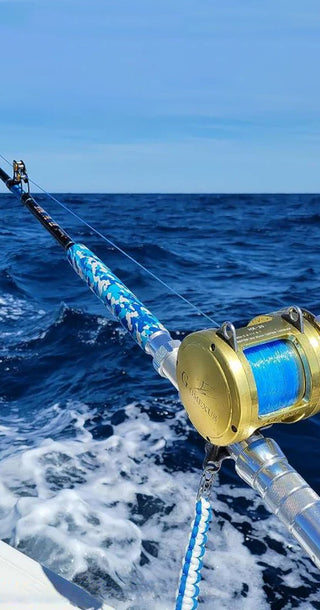Fishing, an age-old practice, evolves continuously with new techniques and tools. Among these, one method remains evergreen and unquestionably effective - live bait fishing. But do fish genuinely prefer live bait? Let's delve into the intricacies of this topic, exploring why live bait is often irresistible to aquatic creatures.
Understanding Live Bait Fishing
What is Live Bait?
Live bait refers to real living organisms used to entice fish. This can include various creatures such as worms, minnows, crickets, and even shrimp. The inherent natural movements and scent of live bait make it a more attractive option for many fish species.
Historical Perspective
Live bait fishing dates back centuries, providing a critical subsistence method for ancient cultures. Even with the advent of artificial lures, live bait retains its value due to its unparalleled effectiveness.
Why Fish Like Live Bait

Natural Movement
One primary reason fish are drawn to live bait is its natural movement. Fish are predatory by nature, and the wriggling and darting of live bait easily catch their attention.
Scent and Aroma
Unlike artificial lures, live bait emits natural scents. These scents can travel through water, triggering a fish's olfactory senses and enticing them to investigate further.
Visual Cues
Live bait's real-life appearance and motion provide an authentic visual cue that is difficult for fish to ignore. This realness often leads to a higher success rate in attracting fish compared to static lures.
Types of Live Bait
Worms
Worms are a versatile and universally effective live bait. They are particularly favored for their durability and ease of use, attracting various freshwater fish.
Minnows
Minnows are small fish often used to catch larger predatory fish. Their natural swimming action makes them highly enticing.
Crickets
Crickets are another popular choice, especially for catching panfish and bass. Their sporadic movements on the water surface can effortlessly mimic the behavior of injured prey, drawing fish in.
Shrimp
In saltwater fishing, shrimp is a common live bait. Their scent and movement make them very appealing to species like redfish and snook.
Fish Species that Prefer Live Bait
Bass
Bass, particularly largemouth bass, have a strong predilection for live bait like minnows and worms. Their aggressive nature makes them likely to strike at live bait quickly.
Trout
Trout are often caught using live bait such as worms and crickets. The natural drift of live bait in streams and rivers can effectively mimic the environment they are accustomed to.
Panfish
Species like bluegill and crappie are highly responsive to live bait, primarily worms and crickets.
Techniques for Using Live Bait
Hooking the Bait
Properly hooking your live bait is crucial. For minnows, insert the hook through the back or the lips to ensure natural movement. For worms, threading them along the hook can conceal the metal, presenting a more convincing lure.
Using a Bobber
Bobbers can help maintain your bait at the desired depth and provide a visible indicator when a fish strikes. This is particularly effective when fishing in still waters.
Drifting Live Bait
Drifting involves letting your live bait move naturally with the current. This technique is highly effective in rivers and streams where fish await drifting prey.
Benefits of Using Live Bait
Increased Catch Rates
Live bait typically results in higher catch rates. The natural movement and scent guarantee more fish bites.
Versatility
Live bait can be used in various environments, from freshwater lakes to saltwater coastlines.
Accessibility
Live bait is often readily available at local tackle shops, and for adventurous anglers, it can be collected from nature.
Challenges of Using Live Bait
Keeping Bait Alive
Maintaining the liveliness of your bait can be challenging, particularly in adverse weather conditions. Using aerated bait containers can help.
Bait Theft
Fish often nibble on live bait, sometimes stealing it without getting hooked. Vigilance and prompt action when a bite is detected can mitigate this issue.
Legal Restrictions
Some regions have regulations on the use of certain live baits to prevent the spread of invasive species. Always check local regulations before fishing.
Comparing Live Bait with Artificial Lures
Realism
While artificial lures can mimic baitfish or insects, they often lack the authentic movement and scent of live bait.
Convenience
Artificial lures are easy to store and reuse, unlike live bait which requires special care to keep it alive.
Environmental Impact
Artificial lures do not pose risks of introducing invasive species, an advantage over live bait.
Effective Live Bait Strategies
Matching the Hatch
This strategy involves using bait that resembles the natural prey available in the environment. For example, if local fish are feeding on specific insects, using similar live bait increases success rates.
Seasonal Bait Selection
Different baits work better at different times of the year. For instance, worms may be more effective in spring, while minnows work well in late summer.
Ethical Considerations
Sustainable Bait Harvesting
Overharvesting certain bait species can impact local ecosystems. It's essential to gather bait responsibly, ensuring sustainable practices.
Humane Treatment
Handling live bait humanely ensures longevity and effectiveness. Proper storage in appropriate containers with adequate aeration is crucial.
Expert Tips for Using Live Bait
Fresh is Best
Always use the freshest live bait available. Fresh bait moves more naturally and emits stronger scents.
Adapt to Conditions
Adjust your baiting technique based on water conditions. For murky waters, use bait with strong scents, while in clear water, visual lures work better.
Vary Your Presentation
Experiment with different hooking methods and baits to see what works best. Each fishing spot and target species may require unique approaches.
Conclusion
Fishing with live bait is not just a technique; it's an art form honed over centuries. The allure of live bait lies in its ability to naturally mimic prey, making it an irresistible temptation for various fish species. Whether you're a seasoned angler or a novice, understanding and utilizing live bait can significantly enhance your fishing experience. So next time you head out to the water, don't underestimate the power of a wriggling worm or a darting minnow - your trophy catch might just be one cast away.
For more information on live bait and a variety of fishing supplies, visit One Stop Marine. Explore their extensive collection of lures and frozen bait to gear up for your next fishing adventure.


